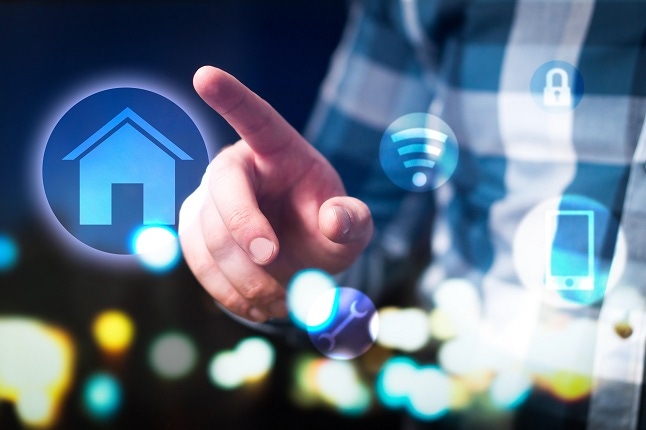Why Ambient Computing May Be the Next Big Trend
Do you feel like you’re already living in a digital world? Then get ready for when computing becomes inescapable.

If you’re not already familiar with ambient computing, you soon will be. The term refers to a world in which technology seamlessly integrates into the environment and becomes pervasive in daily life.
Ambient computing is where technology seamlessly integrates into our surroundings, explains Vladislav Bilay, a cloud solution engineer with Aquiva Labs, an app and software development services company. “It involves interconnected devices, sensors, and intelligent systems that work collaboratively to anticipate and fulfill our needs without explicit user commands.”
“Computing everywhere -- that’s basically it,” declares Mike Loukides, vice president of content strategy at IT learning services provider O’Reilly Media. He notes that the world is already moving close to that vision. “A television is basically a desktop computer with a built-in display,” Loukides says. “I’m sure our dishwasher and washing machine have computers in them.” He points out that there are also plenty of people using smart lights, smart locks, and smart thermostats.
Ambient computing will become an everyday reality through the widespread adoption of connected devices, the Internet of Things (IoT), and advancements in artificial intelligence, Bilay predicts. “As these technologies become more sophisticated, affordable, and seamlessly integrated into our environments, ambient computing will permeate our homes, workplaces, and public spaces.”
AI is part of the picture, although perhaps not as much as many people think, Loukides says. Smart thermostats, for instance, learn their users’ preferences. Yet how much learning really goes on? “How often do you actually touch your thermostat?” he asks. “And if you raise the temperature a few degrees because somebody is sick, do you really want the thermostat to ‘learn’ your new ‘preference’ if it’s just a one-time thing?”
Significant Benefits
Nevertheless, ambient computing’s potential benefits are significant, Bilay says. Beyond its ability to enhance convenience, efficiency, and productivity by automating routine tasks and providing personalized, context-aware experiences, it can improve safety and security by monitoring and responding to environmental changes or potential hazards. “It also has the potential to revolutionize healthcare, enabling remote patient monitoring and proactive health management,” he adds.
Ambient computing can help conserve energy by optimizing resource usage and minimizing waste through automated control systems, says Alex Sheplyakov, CTO at ecommerce services firm WiserBrand. “Additionally, ambient computing can enhance convenience, improve productivity, and provide personalized experiences by seamlessly integrating technology into our routines.”
Ambient computing leaders include most major tech companies, including Google, Amazon, Apple, and Microsoft, all of which are investing in research, development, and products that embody the ambient vision, Bilay says. “They are driving advancements in voice assistants, smart home devices, wearables, and IoT ecosystems.”
Potential Pitfalls
Sheplyakov is concerned that people may, over time, become overly reliant on ambient computing, leading to a reduced understanding of underlying technologies and how things work, leaving them exposed and vulnerable to system failures.
Bilay says users will need to remain vigilant about data protection. He cautions that ambient computing’s reliance on interconnected systems creates dependencies that could make users susceptible to service disruptions caused by technical failures or compatibility issues.
Security is another major concern. “We’ve already seen cases in which an estranged spouse uses the smart thermostat or smart lighting to harass their ex,” Loukides says. When devices are networked, attacks could occur at a larger and more devastating scale. “We’re already familiar with ransomware,” he notes. “Could somebody extort a vendor like Honeywell or Nest because they’ve taken control over all the thermostats?”
Loukides says ambient computing vendors must take the lead on security and privacy issues. “Don’t make network devices that don’t need to be networked,” he advises. “Do make devices that do need to be networked updateable -- forever, not just until the warranty runs out.” Loukides also urges device makers to resist gathering data that doesn’t need to be collected.
Loukides notes that most IT businesses already know how to do all of those things. “The only question is whether the vendors who build the devices are willing.”
A Transformative Impact
Despite the challenges, ambient computing’s impact will be transformative, Bilay predicts. “Users will experience a more intuitive and personalized interaction with their surroundings,” he says. “From automated smart home controls to personalized recommendations, ambient computing will adapt to users’ preferences, behavior patterns, and environmental cues, making technology seamlessly blend into their lives.”
For critics who fear that smart homes will one day turn against their owners, as predicted in numerous movies and TV shows, Sheplyakov believes that possibility is “highly exaggerated and far-fetched.” He notes that ambient computing is focused on enhancing lives and making technology seamlessly integrate with users’ daily routines. “The advancements in this field prioritize convenience, energy efficiency, and personalization, ensuring a positive and safe experience for users,” he concludes.
What to Read Next:
How Intelligent Applications Can Boost Sales
Podcast: Netflix’s ‘Black Mirror’ Portents Data Privacy Doom
About the Author(s)
You May Also Like







